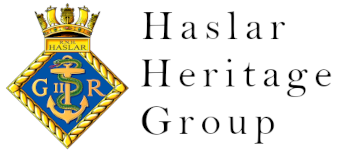The Burial Grounds of Royal Haslar
During the18th Century, the whole area of land to the Southwest of the hospital, including the grounds known as the Paddock, were used as burial grounds covering 9 acres and within a walled area. This included the ground on which the Terrace now stands, as skeletons were uncovered during the course of building the Terrace in 1798. Further remains were found in 1910 during building work on the Surgeon Rear Admiral’s residence as part of the Terrace and also during excavations in 2009.
Records of the burials at Haslar during 1755-63 held at the Public Records Office Kew indicate in excess of 2,500 burials during this time. Dr James Lind, Physician to the Hospital, reported that in the year’s 1779/80 some 1,716 deaths occurred at Haslar. In addition to this it is also known that bodies of sailors decimated by injury, disease and execution onboard ships at Spithead and Portsmouth harbour were also landed at Haslar jetty for burial. This includes 80 members of the Russian Fleet who in 1770 were landed to Haslar suffering from typhus.
By the end of the 18th Century, it is estimated that in three years alone that some 3,600 bodies were interred in the burial grounds. It is thought that the remains of sailors who perished in the wreck of the ‘Royal George’ in 1782 are interred and it is also possible that the remains of Rear Admiral Richard Kempenfelt who was onboard at the time are believed to lie here as well.
On 29th October 1792 having been executed for Mutiny on the Bounty the bodies of John Milward,Thomas Burkett and Thomas Ellison were interred in the Paddock.
On the 1st and 4th December 1805 ships returning from Trafalgar discharged their sick and wounded to Haslar and having succumbed to their wounds are buried here. Jonathan Baptista a Landsman of the ‘Achilles’ who fought at Trafalgar whilst suffering from TB died onboard at Spithead February 1806 and is buried here.
The sick and wounded of Sir John Moore’s Army 1808-14, who having fought in the Peninsular war also returned to Haslar in great numbers by troop ships suffering from wounds and Typhus and 528 were buried between October 1808 and December 1809, with 552 Naval burials in the Paddock. In the same time period 126 Russian sailors and cavalrymen were also buried having been admitted to Haslar from the Russian Fleet impounded in Portsmouth harbour from ships commanded by Captain Alexi Grieg, Captain – Commodore Ignatyev and Vice Admiral Seniavin.
Troops who retreated from Walcheran in1809 and the Battle of Waterloo in1815 also lie here. Many of the Haslar staff (including washerwomen) who succumbed during 1808-9 to infections whilst caring for patients and washing linen also lie within the grounds.
In November 1818 Susan Bloxam 16 years old died at Haslar visiting her uncle who was the curate of St Luke’s she was also buried in the Paddock.
In 1826 the North corner of the paddock was enclosed by a wall, the ground was consecrated and then used as a cemetery. The headstones scattered across the Paddock were carried inside the cemetery and placed against the cemetery wall. Amongst those recorded was the first Governor of Haslar Captain William Yeo.
In April 1859 the Naval Cemetery was opened at Clayhall and the Haslar cemetery (now the Memorial Gardens) ceased to be used.
The 45 skeletons now laid to rest (re-buried) in the Paddock and were excavated by the Centre for Archaeological and Forensic Analysis (CAFA) led by Dr Andrew Shortland as part research stemming from a land quality assessment in partnership with Defence Estates prior to the disposal of Haslar.
Much has been learnt through analysis of the remains regarding lifestyle, disease and death of those examined. This included one skeleton that was buried with copper coins over the eyes, one coin was a Drapers promissory coin from Gosport dated 1794, the other a Slavery Abolitionist coin depicting a slave in chains and stating ‘Am I not a man and a brother’. It is believed that this is one of only three such skeletons found in the UK.
Eric C Birbeck MVO – Haslar Heritage Group – May 2011.
